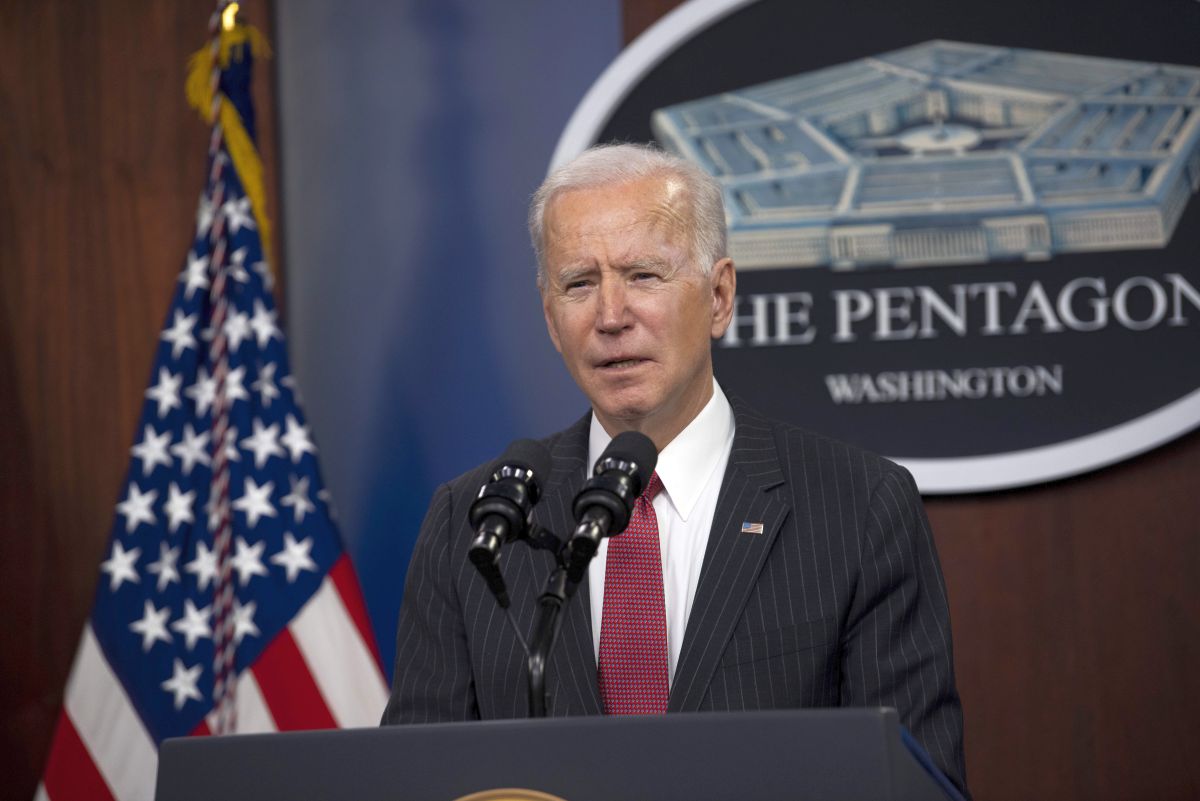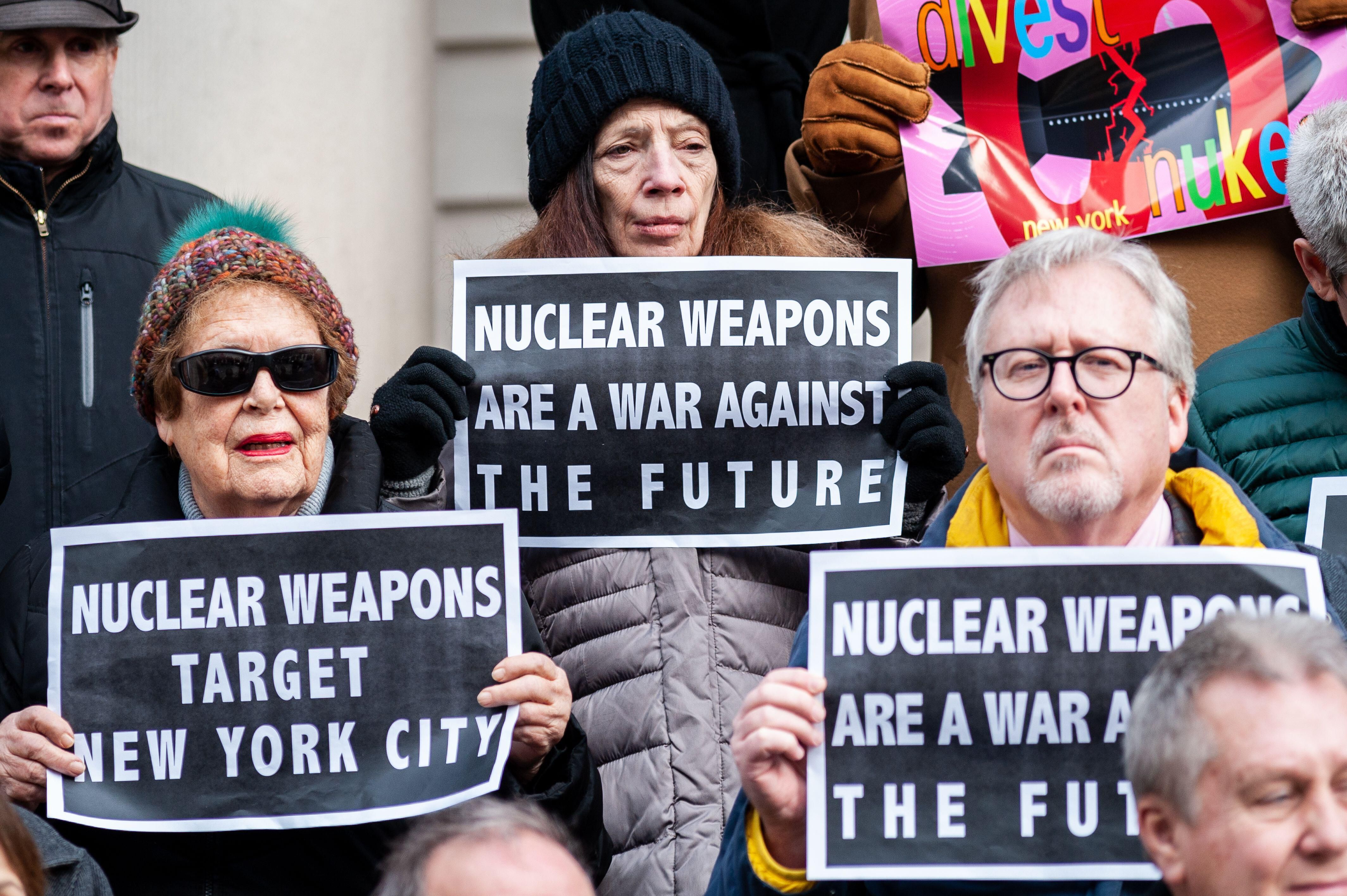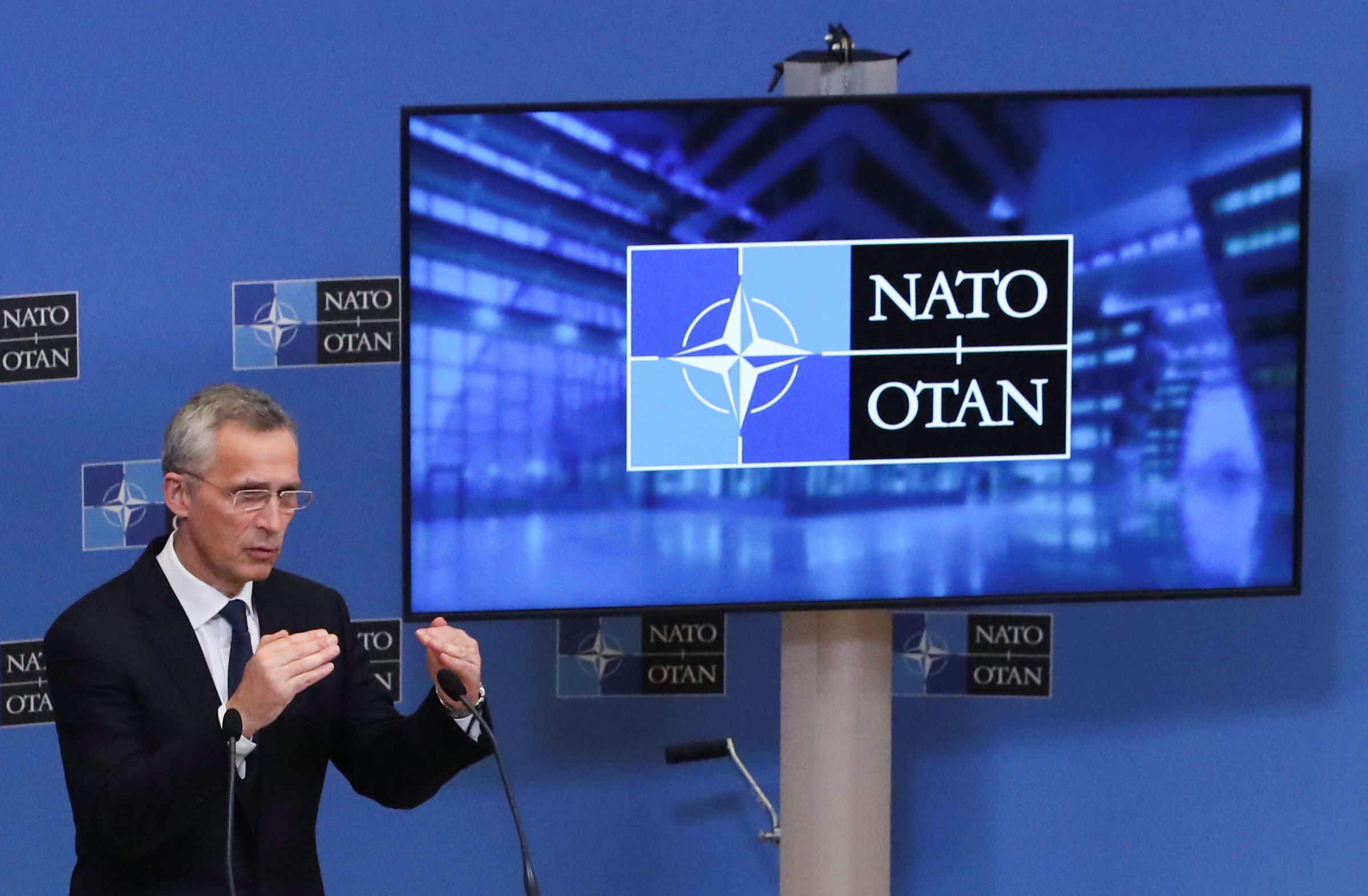Biden Administration and U.S. Nuclear Declaratory Policy: Implications for NATO
Limiting the role of U.S. nuclear weapons to deterring and retaliating against nuclear attacks, as currently under consideration by the Biden administration, would be disadvantageous to NATO. The option of using nuclear weapons in response to non-nuclear aggression is less important for the Alliance than it was during the Cold War, but its rejection by the U.S. would be premature given the ongoing adaptation of NATO’s conventional forces to defence against Russia. Such a shift would weaken the Alliance’s political cohesion, and possibly also the credibility of deterrence of Russia.
 Photo: Lisa Ferdinando/Dod/Zuma Press/Forum
Photo: Lisa Ferdinando/Dod/Zuma Press/Forum
The 5th U.S. Nuclear Posture Review (NPR), conducted early in every new presidency since Bill Clinton, is to be concluded in early 2022. The NPR outlines the administration’s position on issues related to nuclear weapons, including the role and structure of U.S. nuclear forces, as well as the arms control and non-proliferation policies. Joe Biden pledged during the 2020 presidential campaign to reduce the role of nuclear weapons in U.S. security strategy, and this goal was reiterated by his administration in the Interim National Security Strategic Guidance from March 2021.
One area of potential change is declaratory policy, which is the public statement about the conditions under which the U.S. could use nuclear weapons. At the very end of his vice presidency, in January 2017, Biden argued that “deterring—and if necessary, retaliating against—a nuclear attack should be the sole purpose of the U.S. nuclear arsenal”. During the campaign, both Biden and the Democratic Party pledged to work to put that belief into practice, in consultation with U.S. allies. Adoption of such a sole purpose declaration would mark a historic change in U.S. deterrence policy. It has traditionally signalled—in more or less an open way and to varying degrees—the possibility of the first use of nuclear weapons by the U.S., thus not only in response to a nuclear attack.
U.S. Nuclear Declaratory Policy
U.S. nuclear declaratory policy relies on “calculated ambiguity”. It indicates situations in which the U.S. might use nuclear weapons, but does not specify exactly which attacks would provoke a nuclear response nor details of the latter. Such policy is meant to simultaneously complicate an adversary’s calculations and strengthen deterrence, assure allies of the U.S. resolve to defend them, but also preserve the U.S. room to manoeuvre during a crisis.
The U.S. nuclear first-use option played a key role in the strategy of deterring an invasion of NATO states and other allies by the numerically superior conventional forces of the Soviet Union and the communist bloc. Following the dissolution of the USSR, the U.S. became the power with by far the most powerful non-nuclear forces (entailing conventional and increasingly also missile defence and cyber capabilities). Since use of non-nuclear forces would be more proportional and less controversial, the U.S. significantly reduced the role of nuclear weapons in countering non-nuclear threats. But the U.S. has not entirely excluded the option of being the first to launch a nuclear attack.
Both the administrations of Barack Obama and Donald Trump declared that they would consider the use of nuclear weapons only in “extreme circumstances” and to defend the “vital interests” of the U.S., its allies, and partners. They also pledged that they would not launch nuclear attacks against states that do not possess nuclear weapons, are a party to the Nuclear Non-Proliferation Treaty (NPT), and are in compliance with their nuclear non-proliferation obligations (this assurance was to help dissuade other countries from developing their own nuclear arsenals). In practice, this has narrowed down the addressees of American nuclear declaratory policy to countries seen by the U.S. as potential adversaries: China, Russia, North Korea, and—depending on the assessment of its compliance with the NPT—Iran.
Obama’s 2010 NPR noted that there remains a “narrow range of contingencies” in which nuclear weapons may play a role in deterring conventional, biological, and chemical attacks. In turn, Trump’s 2018 NPR introduced the concept of “significant non-nuclear strategic attacks” that could qualify as “extreme circumstances”. It stated that they include, but are not limited to, attacks on the civilian population or infrastructure, nuclear forces, their command and control, or warning and attack assessment capabilities. The document also signalled that such attacks included those conducted with cyber capabilities. Critics pushed back against these changes as a broadening of scenarios of possible nuclear use, although the Trump administration described them only as a clarification of the 2010 language.
Debate on sole purpose
In Biden’s wording, “sole purpose” is very close or equivalent to a no first use (NFU) policy. Some experts argue that sole purpose is less categorical because it does not directly exclude the first use of nuclear forces, but rather outlines the rationale behind maintaining them. However, Biden’s formulation is clearly meant to communicate that nuclear weapons do not play a role in countering non-nuclear attacks and the U.S. does not envisage using them first under any circumstances.
Adoption of a sole purpose (or NFU) policy is opposed by many Republicans, while there is no unity on the issue among the Democrats. The Obama administration twice (at its beginning and end) considered but decided not to limit the purpose of nuclear weapons to deterrence of nuclear attacks. It did, however, commit in 2010 to work to establish conditions under which such a policy could be adopted. This commitment was not reaffirmed by the Trump administration. The 2018 NPR noted that nuclear weapons will continue to play a role in deterring non-nuclear aggression for the “foreseeable future”.
Supporters of sole purpose argue that U.S. non-nuclear capabilities have become strong enough to effectively counter any non-nuclear attacks. They also argue that the threat of using nuclear weapons first against a nuclear-armed adversary is not credible, as its execution would risking triggering a devastating retaliation against the U.S. Some also warn that the side effects of a nuclear response could be worse than the aggression itself. Depending on the scale and places of nuclear strikes they could result in unintended losses on territories of allies or third parties, and among U.S. forces and the civilian population of the adversary. Sole purpose supporters are also concerned that the current declaratory policy increases the risk during a crisis, that U.S. adversaries could start a nuclear war themselves, misjudging (especially when combined with potential errors of early warning systems) that the U.S. is going to attack their nuclear forces first. By demonstrating that the U.S. is taking steps to limit the risk of such a conflict and the role of nuclear weapons, adoption of sole purpose also is supposed to facilitate efforts to persuade non-nuclear countries to cooperate closer in countering nuclear proliferation. Moreover, sole purpose supporters frequently call for following up such a declaration with cuts to U.S. nuclear forces and modernisation plans. This is based on the premise that smaller forces would suffice to retaliate against nuclear attacks, while unspent funds could be shifted to the enhancement of conventional forces and/or non-military purposes.
According to the critics of sole purpose, the threat of nuclear escalation—even in case of uncertainty—substantially increases the risks for a potential aggressor and helps prevent large-scale conflicts and the most severe non-nuclear attacks. In earlier discussions, they pointed mainly to biological and chemical threats, but in recent years to the significant growth of Chinese and Russian conventional and cyber capabilities. Critics are also concerned that adoption of sole purpose would undermine the belief in U.S. security guarantees, in extreme cases prompting some allies to develop their own nuclear weapons. Opponents of sole purpose also do not believe that its adoption would satisfy the advocates of quick and complete nuclear disarmament or induce positive changes in the nuclear policies of U.S. competitors. This assumes that rivals will either not believe the American declarations (just as the U.S. did not believe in NFU declared by the USSR), or that the problem is not the U.S. provoking first use by adversaries fearing an attack, but rather that the latter may deliberately employ nuclear weapons for offensive purposes.
Implications for NATO
Limiting the role of U.S. nuclear weapons to deterrence and retaliation against nuclear attacks would cause significant controversy within NATO. After the Cold War, the Alliance followed the U.S. lead by substantially reducing the role of nuclear weapons in its strategy, but not entirely rejecting the option of using them first. While sole purpose would be welcomed by some among the political elites in NATO countries with especially strong anti-nuclear sentiments (such as Germany and Norway), many governments—particularly on the Eastern Flank—would see this shift as weakening U.S. security commitments. Rejection of sole purpose was already advocated by France and the UK during the Obama presidency. Both countries want to avoid international and/or public pressure to adopt a similar change, especially as they have much smaller conventional capabilities than the U.S. and rely on nuclear weapons to a greater extent.
Despite NATO strengthening its conventional deterrence since 2014, this process is not over, including with respect to increasing the readiness of reinforcements and availability of key capabilities such as long-range precision fires or air defences. It is possible that NATO would not be able to defend or at least promptly retake the most exposed parts of allied territory, near which Russia enjoys conventional superiority. This would necessitate a long and costly conflict, potentially creating doubts about the resolve of NATO countries to prosecute it. This makes the prospect of nuclear escalation all the more important for complicating Russian calculations. While one should expect that the U.S. president would seek to avoid the first use of nuclear weapons and related dangers and dilemmas, there are a few plausible scenarios in which a U.S. president would at least consider their use (especially if faced with the destruction of significant parts of U.S. military forces). Communicating, by adopting sole purpose, that there are no such scenarios, could thus weaken deterrence of Russia. Adoption of sole purpose would also risk—contrary to the intentions of most of its supporters—deepening the concerns about U.S. readiness to undertake risks related to retaliating against nuclear attacks on NATO countries or even their conventional defence. There is already uneasiness among NATO members about the future of U.S. involvement in Europe in light of the growing U.S. attention and resources on the competition with China.
The U.S. adoption of sole purpose would not induce Russia to reduce its large non-strategic nuclear forces, as they serve the goals of both intimidating NATO members and balancing their generally larger conventional forces.
Additional concerns among some allies would come from the simultaneous cuts to U.S. nuclear forces if they were not conditioned upon Russian concessions and/or reduced or removed capabilities perceived as particularly important for deterring attacks against U.S. allies. This regards especially B61 nuclear bombs deployed in Europe. Adoption of sole purpose would likely intensify the calls for withdrawal of these weapons in inter-alliance and national discussions. These bombs (and the dual-capable aircraft that carry them) are often erroneously described as weapons intended primarily for first “tactical” use on the battlefield, although in reality they play a broader role in deterring nuclear attacks. Moreover, the U.S. adoption of sole purpose would not induce Russia to reduce its large non-strategic nuclear forces, as they serve the goals of both intimidating NATO members and balancing their generally larger conventional forces.
In turn, additional strengthening of U.S. conventional forces in Europe would help ease allied concerns. Providing a credible conventional defence would, however, also require a significant boost in contributions by other NATO members.
Conclusions and Recommendations
U.S. rejection of the option of the use of nuclear weapons to counter non-nuclear aggression risks weakening the deterrence of Russia in Europe and would deepen the divides within NATO. It would thus run contrary to Biden’s declared aim of strengthening the Alliance.
Nonetheless, as the Biden administration appears determined to emphasise that it relies on nuclear weapons to a lesser degree than the Trump administration, it could consider more modest changes in consultation with allies. This includes specifying the conditions that must be met in order to allow the U.S. to adopt sole purpose without decreasing NATO security. An essential condition should entail further strengthening of conventional defence capabilities by the U.S. and other NATO members, which is in the interest of the Alliance in any case. As nuclear deterrence poses many dilemmas and uncertainties, it should be relied upon only to the extent that is absolutely necessary.
It could also turn out to be non-controversial for allies if the U.S. returned to the 2010 NPR wording of a “narrow range” of scenarios of possible use of nuclear weapons in response to non-nuclear attacks, as well as to avoiding a specific indication of such scenarios. It would be more problematic to establish a more precise threshold triggering potential nuclear use, as this could create concerns about encouraging aggression on a lesser scale up to the trigger. If, however, the administration decides to do so, such a list should allow for nuclear use in order to defeat or retaliate against non-nuclear attacks posing an existential threat to the U.S., their allies and partners, as well as with respect to attacks with effects comparable to the use of nuclear weapons.





_Easy-Resize.com.jpg)